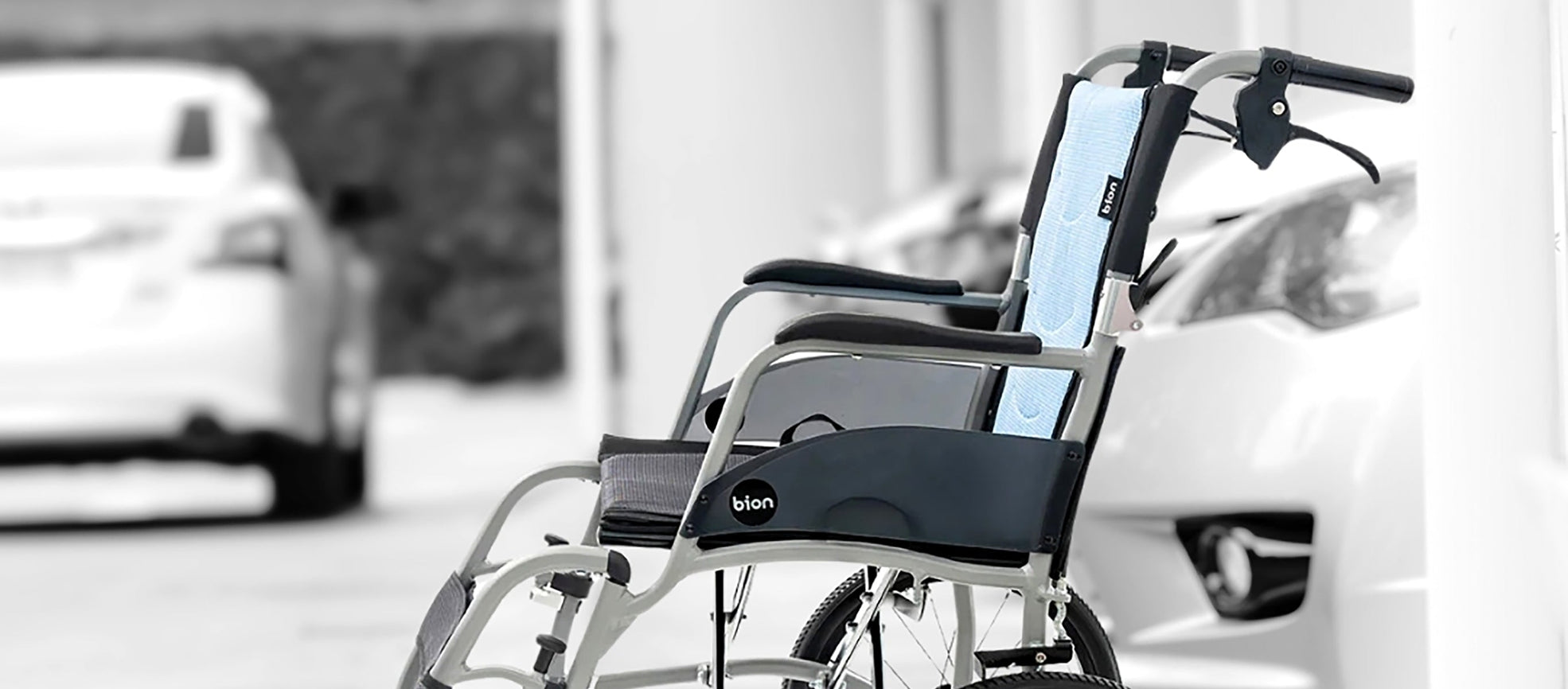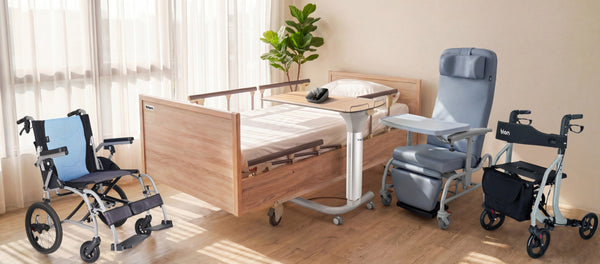Smarter, Lighter & More Personal
Mobility aids have evolved to better support both users and caregivers, offering smarter features that make daily care easier.
Over the years, manual wheelchairs in particular have undergone a quiet but powerful transformation. Becoming lighter, more ergonomic, and better suited to individual lifestyles.
While the industry continues to innovate, the core factors in choosing the right wheelchair remain just as important. If you haven’t read our guide on the essential considerations before buying a wheelchair, read here.
Modern technology is enabling engineers to push the boundaries of wheelchair design, reimagining it from a basic aid into a tech-enhanced mobility solution with features well beyond the standard.
Let's dive into how recent advancements are transforming wheelchairs into smarter and more user-friendly mobility solutions.
Smart Design Elements
Wheelchairs have become increasingly smarter, featuring thoughtful designs that make daily life easier, more comfortable, or personalised. These smarter mobility solutions empower users to stay active and live independently.
Take the Bion Traveller E100, for example, its retractable luggage-style handles are thoughtfully designed with caregivers in mind, offering effortless maneuverability. This makes the wheelchair not only easy to handle but also compact and convenient for travel.

Retractable luggage-style handles of Bion Traveller E100
The Postur Seating System is another brilliant example of smart design done right. This ergonomic seating solution optimises seat angles to support proper spinal alignment, promoting a more natural and healthier posture. By enhancing sitting posture and improving pressure distribution, it offers greater comfort and long-term support for daily use.

Postur Seating System ergonomically designed for better sitting posture
Redefining Portability
Today’s wheelchairs are designed with greater comfort and convenience in mind. Starting with lighter frames and more intuitive folding mechanisms that makes it quicker and easier to collapse and store when not in use.
Materials such as magnesium alloy and alluminium alloy are increasingly used in wheelchair construction due to their lightweight properties and high strength-to-weight ratio. These materials help reduce overall weight while maintaining long-term durability and structural integrity.
The Bion iLight Pushchair L210 stands out as a strong contender in the lightweight wheelchair category. Weighing just 8.6kg, the pushchair is the lightest pushchair in its class worldwide.

Light as a feather, Bion iLight Pushchair L210
When it comes to storage, compact wheelchairs are also a smart space-saving solution, especially in smaller apartments, shared living spaces, or transportation. A wheelchair that folds down neatly makes a big difference. It can tuck into a corner, a closet, or a car trunk without getting in the way. For families and caregivers, that means less clutter and more room to live comfortably.
A compact and lightweight wheelchair isn’t just easier to move; it can make a world of difference in everyday life. It's a gateway to greater freedom and independence.

Bion Kompac Wheelchair K100 folded into a compact size to fit easily into the car boot
Customisation for User Comfort
No two wheelchair users are exactly alike. Everyone has unique mobility needs, body dimensions, and lifestyle preferences, which is why customisation is becoming increasingly important in modern wheelchair design.
As more people seek wheelchairs that fit their daily routines and comfort levels, mobility innovators are offering a wider range of adjustable features to meet this demand. These personalised adjustments not only improve functionality but also significantly enhance the user’s overall experience, leading to greater well-being and independence.
1. Height Adjustability for better comfort and support
One of the most commonly adjusted aspects of a wheelchair is height. Key components like calf pads, armrests, and backrests can be tailored to suit the user’s proportions, helping to improve posture, reduce strain, and promote better ergonomics throughout the day.

Height adjustable calf pads of Recliner Pushchair G910
2. Customising the backrest for better posture
The backrest, in particular, plays a crucial role in supporting the spine. Many wheelchairs now feature a tension-adjustable strap system, allowing caregivers to fine-tune the fit according to the user’s needs. This type of customisation helps reduce pressure on the spine, improves posture, and boosts long-term comfort, especially during prolonged use.
3. Interchangeable parts for tailored needs
Beyond basic adjustments, parts of the wheelchair are also interchangeable, such as swapping standard detachable footrests for elevated ones or opting for height-adjustable armrests. These features provide greater flexibility, enabling the wheelchair to accommodate different body types and health conditions better. An example would be Bion iLight Wheelchair L500 that is available in 20” and 22”.

The Bion iLight Wheelchair L500 features swappable components like footrests and armrests
Unfolding Journeys Beyond Boundaries
Originally, wheelchairs were built with one simple goal: to get users from point A to B. But today’s models have evolved far beyond basic mobility aids. They are thoughtfully engineered, smarter, lighter, and more personalised than ever before.
For caregivers, it eases both the physical and logistical burden, reducing strain and making daily care more manageable. For the user, it opens the door to a fuller, more meaningful life—one less weighed down by heavy equipment and more defined by comfort and independence.




